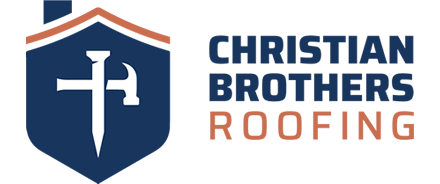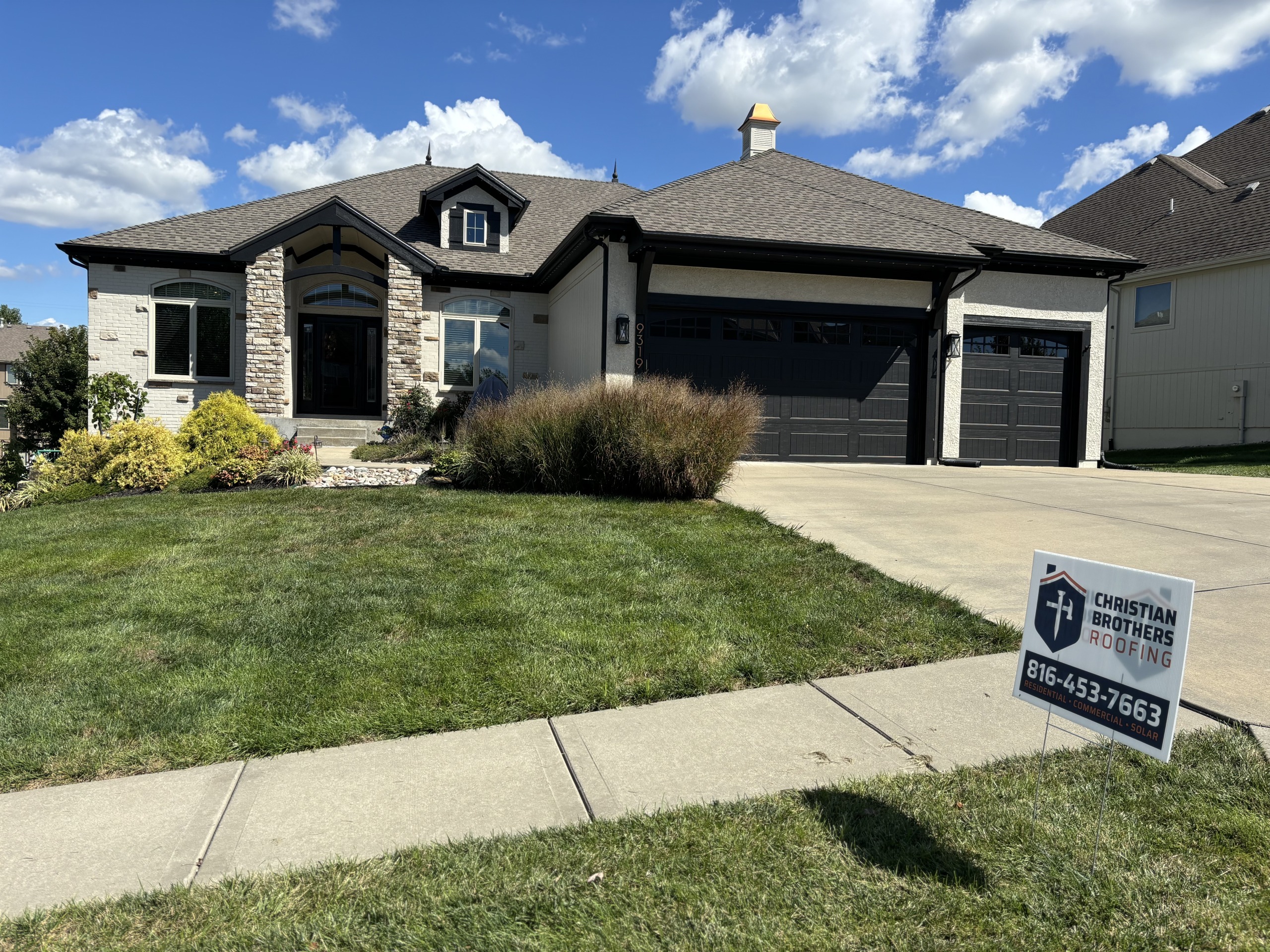Yes, You Can Finance Your New Roof

A roof overhead protects your home and your family. When it needs replacing, life can get really stressful really fast, especially if you’re worried about how to pay for it. Fortunately, you can finance a new roof.
Your options may depend on whether you’re anticipating an upcoming need versus addressing an immediate issue. Wait too long to fix a leaky roof though and the additional cost of home repairs, from damaged flooring and drywall to furniture and belongings, can add up quickly.
If you’re interested in financing your new roof, check out this guide for helpful advice to make the best decision for you.
Watch the Fees and Interest Rates
The national average to replace a roof hovers close to $15,000. Where you live, your roof type and the roofing material you choose can increase the cost, sometimes dramatically. For example, wood, slate, copper, and other premium materials can soar past $50,000.
If you opt for financing, you can expect to pay fees and interest rates, which also add to the overall cost. Be sure to shop around because some options and some lenders charge more than others.
Do the math! Even a slight difference in interest rates can save you hundreds, even thousands of dollars.
Also, keep in mind you’ll be adding a monthly payment to your existing budget. Look for financing conditions that fit your needs, from the loan duration and type of interest rate to the payment schedule and possible grace periods.
Know the Lingo
Financing agreements generally share some common terminology. Here are a few that are helpful to know if you’re considering financing your roof replacement:
Origination Fee — The lender’s fee for processing your loan application.
Principal — The amount of money you’re borrowing from a lender.
Interest — The cost of borrowing the money. The interest rate is usually calculated based on a percentage of how much you borrow.
Fixed Interest Rate — Your interest rate stays the same for the entire length of your loan. It assures predictability because you know exactly how much you have to pay and when. You always pay the same even if interest rates in the market rise.
Adjustable Interest Rate — An adjustable interest rate, also known as a variable interest rate or a floating interest rate, changes over the course of your loan. The rate, which fluctuates at specific intervals based on the market, can go up or down. If you agree to an adjustable rate, be sure to budget additional money to cover any rate increases.
Collateral — Collateral refers to any assets of value such as your home, land, car, or equipment that you use to guarantee your loan. The lender can seize them if you don’t pay back the loan according to the agreement.
How to Get Started
Once you determine that financing is the path you want to take, it’s time to take the next steps.
1. Get Three Estimates From Reputable Roofers
Knowing how much your new roof will cost will help you decide how much to borrow.
2. Request Information From Lenders
Ask about their interest rates and types, all fees associated with the loan, potential repayment timelines, policies on early and late payments, required documentation, and any other terms or conditions they think you should be aware of. If a lender doesn’t answer all of your questions or seem transparent about their fees and terms, choose another company.
Also, ask if you can go through the prequalification process to get a better idea of the true cost of your loan. It shouldn’t affect your credit record. Some may require a fee for this.
For financing and lender options, check out the next chapter in this guide.
3. Compare Total Loan Costs
Gather together each lender’s fees, interest rates, and terms. Hopefully, each one gave you a total amount associated with the loan. If not, you’ll need to do some math or you can go back to the lender and ask for an estimate.
Once you have everything, compare your options to see which one offers you the most favorable terms, including the length of time you have to pay it back, the monthly payment, late payment policies, whether your home or other assets are at risk, and the final total you’ll end up spending.
4. Apply For The Loan
Don’t feel pressured to make a decision until you know exactly how the loan will affect your financial health. Once you feel comfortable with your choice, let the lender know you’re ready to apply for a loan. They should be willing to answer your questions candidly and guide you through the process.
You’ll likely need to provide or grant access to financial documents such as proof of employment and income, government-issued identification, credit history, insurance information, bank statements, and property title.
The Pros and Cons of Your Credit Choices
When you’re ready to take out a loan to finance your new roof, you have several options. You can tap into your home’s equity, take out a personal loan or work directly with the roofing company. Here are the advantages and disadvantages of each one:
1. Home Equity Loan (HEL)
A tangible financial asset, home equity is how much of your home or property that you own outright. In other words, it’s the difference between your home’s current market value and any amounts you owe on a mortgage or liens against it. With a home equity loan, you’re able to borrow against the equity. The loan is provided to you in a lump-sum amount.
PROS
- With today’s rising home values, you may have more home equity than you realize, increasing your borrowing power.
- Since it’s a secure loan, the lender’s confidence may translate into a lower interest rate than other types of borrowing.
- You may be able to get a fixed interest rate for up to 30 years.
- You can leave your existing mortgage in place, which can save you money if it has a lower interest rate. You’ll essentially have two mortgage payments.
- In some cases, the interest paid can be tax-deductible. Ask your tax advisor.
CONS
- With a home equity loan, you’re offering your house to the lender as collateral. If you’re not able to repay the loan, you could lose it. Weigh carefully your ability to repay the monthly amount.
- Generally requires a good credit score of 620 or higher for a better interest rate.
- Home equity loans typically come with additional fees such as closing costs, appraisal fees, and title search fees, which can affect the overall cost.
- May take a little longer to get the money.
2. Home Equity Line of Credit (HELOC)
Similar to a home equity loan, a HELOC lets you borrow against your home’s equity. Instead of a loan, it’s set up as a revolving line of credit similar to a credit card.
PROS
- It’s flexible. You can borrow the amount you need of your home’s equity up to what the lender allows.
- Since it’s a secure loan, the lender’s confidence may translate into a lower interest rate than other types of borrowing.
- Once you pay down the HELOC, you can borrow against the limit again.
- In some cases, the interest paid can be tax-deductible. Ask your tax advisor.
CONS
- With a HELOC, you’re offering your house to the lender as collateral. If you’re not able to repay the loan, you could lose it. Weigh carefully your ability to repay the monthly amount.
- HELOCs often have variable interest rates, which can increase the cost of financing your new roof.
- HELOCs typically come with additional fees such as origination fees, annual fees, closing costs and early termination fees, which can affect the overall cost.
Ready access to a large credit line may tempt you to spend more than you would otherwise. - May take a little longer to get the money.
3. Government-Insured Loan
Government agencies offer various loan types and home improvement assistance programs that may help homeowners finance home repairs such as a roof replacement. They include the Federal Housing Administration (FHA), U.S. Department of Housing and Urban Development (HUD), U.S. Department of Agriculture (USDA), and U.S. Department of Veterans Affairs (VA).
The loans may be based on income, age, home location, repair type and other factors. Ask each one about their loan programs, what the qualifications are, what documentation is required, and where you can find approved lenders.
PROS
- May offer lower interest rates and fewer fees.
- Maybe be more lenient about your credit score and financial history.
CONS
- Depending on what’s required, you may not qualify.
- May take longer to get the money.
4. Personal Loan
Offered by banks, credit unions, and other financial organizations, a personal loan allows you to finance your new roof without the risk of losing your home. It may be a better option than a home equity loan or a home equity line of credit, especially if you need a small amount to bridge the gap between your savings and the cost of the roof replacement.
PROS
- It’s flexible. You can use it for almost anything.
- It’s provided to you in a lump-sum amount.
- Your bank or credit union may offer you a better rate.
- The interest rate is typically fixed so you know how much the payment is each month.
- If you have poor credit, you may be able to get a secured loan where you offer your car or equipment as collateral. If you’re not able to repay the loan, the bank can take it from you.
- May be a faster way to get money than other borrowing options.
CONS
- Like borrowing on credit cards, the interest rate can be sky high, adding significantly to the cost of your roof.
- The interest rate is based on the lender and your credit score.
- You’ll pay an origination fee.
- The interest is not tax deductible.
A credit score of 690 or higher gets you a better rate on a personal loan.
5. Credit Card
If you have great credit, you may be able to finance some or most of the cost of your roof replacement on a credit card.
PROS
- Some credit card companies may offer a brief introductory promotional period with a low or 0% interest rate. If you’re able to pay down the balance within the promotional period, it’s essentially an interest-free loan.
- You may be able to earn points on the amount you charge. Ask the credit card company.
- Can be a quick source of money if you’re in a hurry.
CONS
- You could be charged high merchant or transaction fees by the roofer.
- The interest rate can be sky high, adding significantly to the cost of your roof.
- If you’re not able to pay down the loan amount fairly quickly, this can get very expensive over time.
6. Financing By The Roofing Company
Some contractors may work with a third-party financial organization to provide in-house financing options for your roof replacement. It can function like a personal loan, revolving credit card account, or installment loan. Ask for the details.
PROS
- It’s likely an easy, streamlined process, making it a faster way to get money than other borrowing options.
- It may be a good option if you’re having trouble finding financing elsewhere.
- If you have good credit, the roofer may offer a limited-time 0% interest loan, which could save you a lot of money if you can pay off the debt quickly.
CONS
- May have a variable interest rate, which can increase the cost of financing your new roof.
- You’ll likely pay additional fees such as a dealer fee and origination fee, which can add up.
Ways to Keep More Money in Your Pocket
Now that you know where to turn for financing, how do you get the best deal? Here are four tips for saving your hard-earned cash.
1. Look for the best rates and terms.
Get basic details from several types of lenders. Once you decide on the type of loan — home equity, personal loan, credit card, etc. — reach out to a few lenders within that category and compare your options. Yes, it’s time consuming, but it could save you a lot of money. Interest rates can change daily. If you decide on a home equity loan or home equity line of credit, request that the lender lock the rate.
2. Check with government agencies.
If you’re a veteran, active duty military personnel, elderly, disabled, have low-to-moderate income, live in a rural area, and/or are facing financial hardship, you may qualify for a special home improvement loan for your roof repair or replacement. Check with the Federal Housing Administration (FHA), U.S. Department of Housing and Urban Development (HUD), U.S. Department of Agriculture (USDA), and U.S. Department of Veterans Affairs (VA).
3. If you have time, try to improve your credit score.
The higher your credit score the better your interest rate will be, which will save you money. If you can, make your monthly payments on time. Work on paying off your credit card debt. Don’t apply for multiple types of credit at once. If you don’t have a credit card, get one even if it’s a secured card, and charge and promptly pay off small amounts every month. Keep at it. Improving your credit can take a year or two.
4. Watch out for scams.
Save your money. If the deal sounds too good to be true, it likely is. Don’t pay an application fee or give out your personal or financial information unless you know you’re working with a reputable lender. Some scammers will call, text, or email pretending to be a company or agency that can help you. When you’re ready to provide information about your identity or finances, make sure you contact the agency directly.
We’re Transparent, Flexible, and Fast
At Christian Brothers Roofing, we offer several flexible financing options. We’re happy to answer all of your questions so you can make the decision that’s right for you.
- We work with a trusted third-party lender to bring you a range of financing choices.
- You choose the loan term that works best for you, from 5 years to 20 years.
- We explain the fine print so there are no surprises.
- The loan approval process is simple and fast so you can get on with your life and avoid delays that can cause more damage to your home.
0 payments, 0% interest
Ask about our special promotional offers!
Find out how we can help you with financing.











